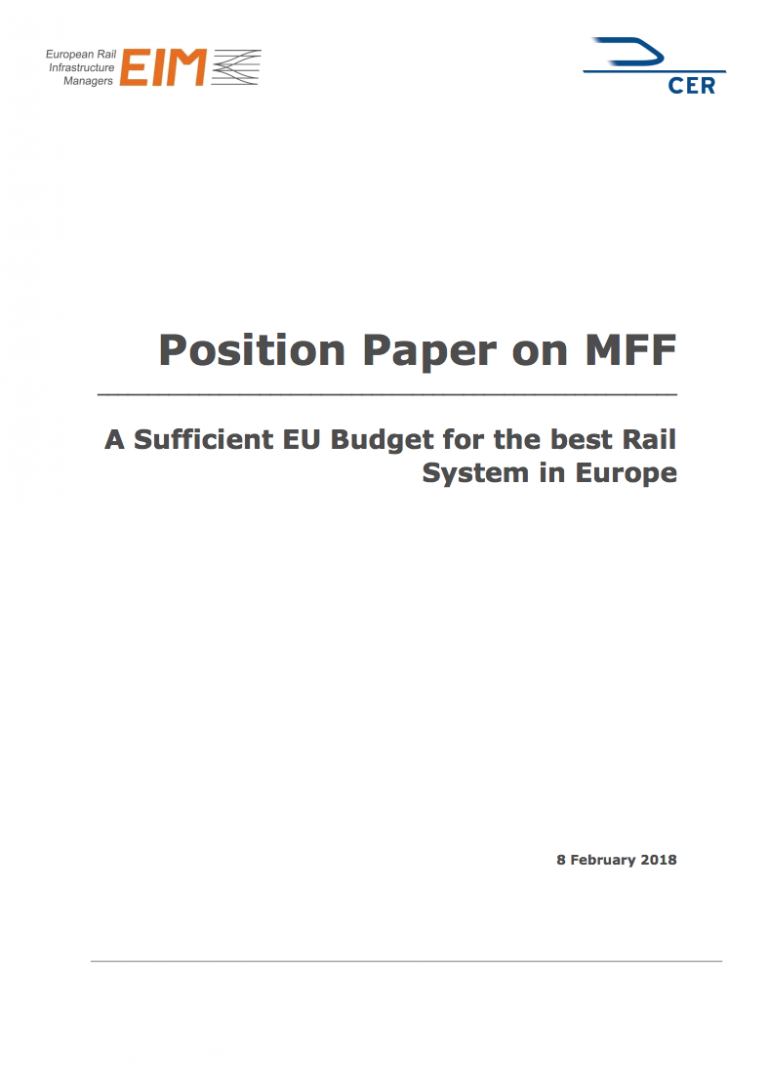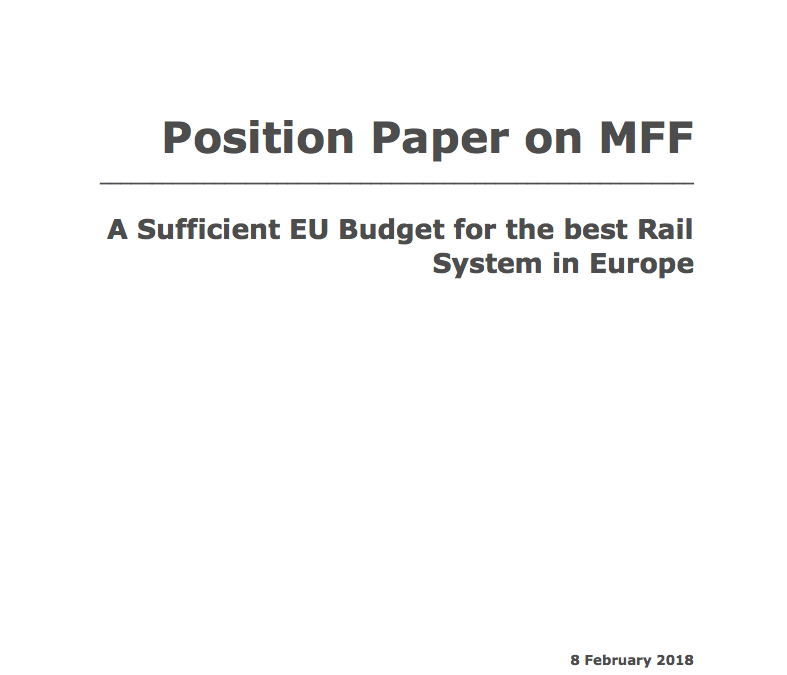Position Papers
EIM and CER jointly published a Position Paper on MFF – A Sufficient EU Budget for the best Rail System in Europe.
In order to remain competitive and continue meeting the expectations of its customers, the rail sector calls upon policy makers to allocate a sufficient part of the EU budget to the following priorities:
- completing the TEN-T network through:
– ensuring that continued EU co-funding is available for the finalisation of major on-going TEN-T projects foreseen to be completed by 2030
– enhancements on the existing rail network (including renewals where appropriate) with a focus on projects that have an EU added value and which support the TEN-T policy objectives
– building new infrastructure, in particular the construction of cross-border sections and missing links, the removal of bottlenecks, and multimodal connecting points
– ensuring that the value of CEF support dedicated to projects on the existing network will be significantly higher in the new MFF than in the current MFF
- supporting the digital transformation of operations, and in particular ERTMS on board and on track, for which at least EUR 15 billion should be allocated from the future EU budget, given the performance and productivity gains at stake
- providing a significantly larger and adequate budget to Shift2Rail2 to be established as an evolution of the successful Shift2Rail Joint Undertaking, in order to deliver the 2050 Rail Vision
- supporting rail freight services, the reduction of transport noise and seamless mobility and accessibility for all users, including persons of reduced mobility
Given that public funding is the main pillar of railway infrastructure financing, the rail sector feels that conventional EU grants (e.g. co-financed by national subsidies) must remain the standard instrument of EU financial support to rail projects.
The selection of the most appropriate CEF instrument – conventional CEF grant, CEF blending or CEF sectorial instruments – to finance a given project should be done on a case by case basis. The CEF blending and other innovative mechanisms should only be foreseen if they enable an increase of the total amount of CEF grants available during the next MFF.
To continue delivering the rail sector’s far-reaching objectives, the CEF transport budget should be increased in the next MFF in order to contribute to the huge financial needs of the transport sector.



